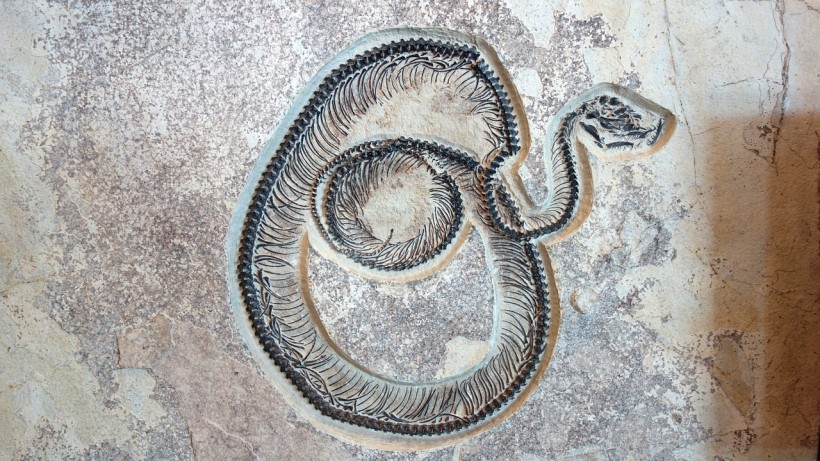Paleontologists were able to discover exceptionally massive snake fossils that point to a brand new ancient snake species that could have been one of the largest to ever exist.
Newly Discovered Enormous Snake Species
The ancient species has been named Vasuki indicus. It is believed to have lived roughly 47 million years ago and span roughly 36 to 50 feet in length. These were all noted in the "Largest known madtsoiid snake from warm Eocene period of India suggests intercontinental Gondwana dispersal" study.
To comparison, the largest snakes in today's modern day are the reticulated python and the Burmese python. These reptiles can stretch up to 32 feet and 19 feet, respectively.
The snake fossils were found in the Panandhro Lignite Mine in the Guharat state of India, which is right by the border with Pakistan. The snake is believed to be part of the Madtsoiidae family, which covers an ancient snake lineage that lived for roughly 100 million years.
There were 27 snake vertebrae uncovered by the researchers. Each one spans roughly 1.5 to 2.5 inches in length. The researchers were also able to calculate the length of the snake's body based on what they were able to uncover.
Debajit Data, an author of the study and paleontologist from the Indian Institute of Technology Roorkee, explains that the most crucial study result is the exceptionally large snake's identification. This does not just add to current knowledge regarding madtsoiidae snakes. It also adds to the known snake diversity from India's Cenozoic.
The Vasuki's massive size suggests that compared to the present, the tropics may have been comparatively warmer. This is due to how previous studies have revealed a correlation between poikilotherm (e.g. snake) size and ambient temperature increases. The animals' internal body temperature varied with that of the environment.
The authors suggest that the snake was part of a large madtsoiid group that evolved first in the Indian subcontinent and later dispersed across southern Europe all the way to Africa in the Eocene epoch. Datta explains that their study shows that these massive reptiles moved from India all the way to north Africa via southern Eurasia. This was after the Indian subcontinent ended up colliding with Asia roughly 50 million years ago.
Massive Size
The Vasuki indicus could have stretched up to 50 feet in length, making it possibly as large as the Titanoboa, which is known to be the longest snake ever.
According to Datta, their findings suggest that the Vasuki was just slightly shorter compared to Titanoboa. However, they cannot entirely rule out the possibility of the Vasuki possibly being larger compared to Titanoboa. This is due to how their collection's vertebrae may not have come from the largest Vasuki individuals. Nevertheless, the same is also true for Titanoboa.
Titanoboa was a gigantic snake that lived roughly 58 to 60 million years ago, just after the dinosaur extinction. The first Titanoboa fossils were found in 2009 in the Cerrejon coal mines in La Guajira, Colombia. Back then, the warm climate of the area was important for the cold-blooded snake to keep its enormous size.
As for Vasuki indicus, it is believed to be a slow-moving creature that ambushed its prey rather than chase it upfront. This makes it similar to the hunting method of modern-day anacondas.
The researchers note that the Vasuki could have been too large to be an active forager. It was more likely to be an ambush predator that subdues its prey by constriction.
It is likely that this snake, as well as other similar snakes, became extinct due to ancient human influence or climate change.
RELATED ARTICLE: 240-Million-year-Old Snake Ancestor Sheds Light on the Evolution Secrets of Reptiles
Check out more news and information on Paleontology in Science Times.















